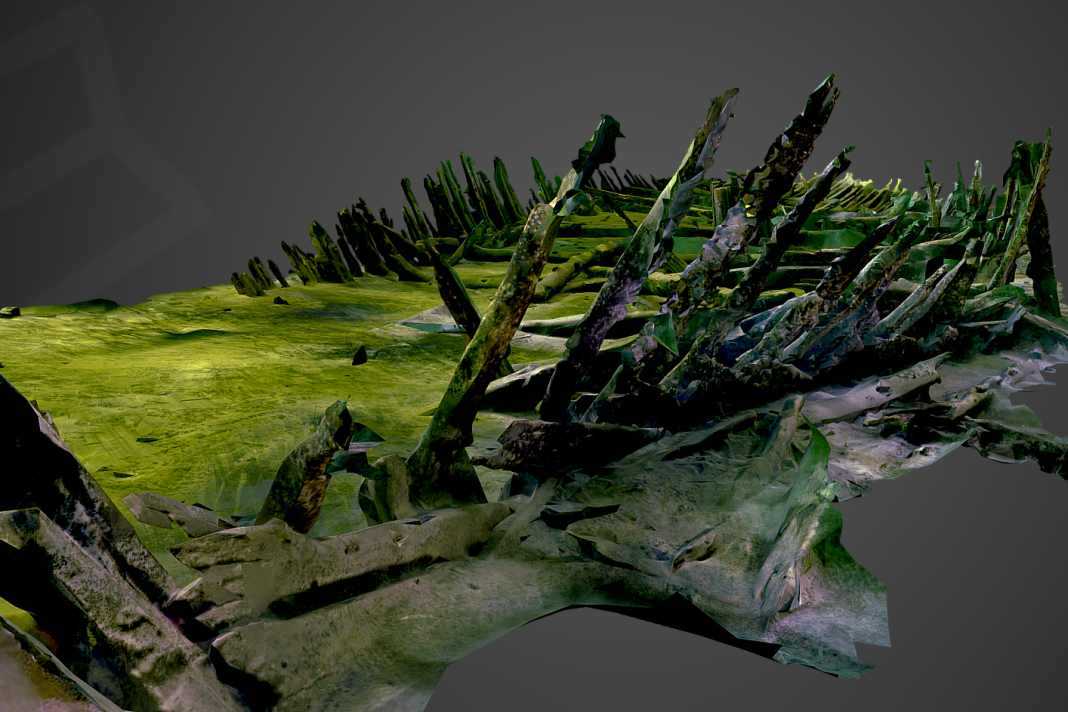





Researchers from the Vrak Museum have discovered a shipwreck off the coast of Stockholm that promises new insights into Scandinavia's maritime history. The wreck, known as "Vrak 5", is located in the bay of Landfjärden near Häringe and probably dates back to the 1480s. It could be the oldest kraweel-built ship of Nordic origin found to date.
"It is a large ship that must have been around 35 metres long and 10 metres wide," explains Håkan Altrock, curator at Museum Vrak and project manager of the investigation. "The ship's frames still protrude high above the seabed, and the sternpost and rudder are still upright."
The researchers have completely scanned the wreck. The 3D scan can be seen here. The model can be moved freely and can be zoomed in and out.
The construction of the ship is particularly remarkable. In contrast to the clinker construction method prevalent at the time, in which the planks overlap, this ship was built using the Kraweel method. The planks are laid edge to edge on frames, resulting in a smooth hull. This technique made it possible to build larger and more stable ships. The term Kraweel or caravel construction is derived from the Portuguese caravela, 'caravel'.
More about wrecks:
Transition to a new era of shipbuilding
The discovery of Vrak 5 marks an important transition in the history of Nordic shipbuilding. "This ship represents a fascinating link between medieval and modern shipbuilding," explains Altrock. "It can provide us with valuable new insights into an important period of upheaval in Sweden's maritime history."
The development of kraweel construction technology is seen by many researchers as a reaction to the introduction of cannons on ships in the 15th century. The need to have artillery on board required ships with greater stability and resilience, as well as hulls strong enough to withstand enemy cannon fire.
The wood used to build the ship came from the Möre region near Kalmar or from eastern Blekinge. This finding provides important information about the trade routes and resource utilisation in the Baltic Sea region at the time.
Further investigations planned
The wreck is one of five shipwrecks discovered in Landfjärden. Earlier written sources had categorised these wrecks as Viking ships, but their exact type and age remained uncertain until now. "A year ago, we dated three of the four largest wrecks to the 17th and 18th centuries. We were even able to link one of them to a written source from the 17th century," reports Altrock.
The marine archaeologists at the Vrak Museum are now planning to complete the project on the maritime environment of Häringe and continue Vrak 5 as an independent research project. "We intend to apply for external funding for an excavation," says Altrock. A detailed examination of the wreck could provide valuable information about construction techniques, materials and possibly even about life on board a late medieval Norse ship.
